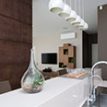The Cotswolds is one of the most picturesque regions in the UK. With its golden-stone cottages, leafy lanes, and postcard-perfect villages, it attracts millions of visitors every year. For small business owners, this beauty brings a natural advantage. The setting sells itself. A stunning backdrop is ready-made for Instagram, and tourists often arrive with their wallets open and expectations high.
But there’s an often-overlooked flip side to all this visual charm. When everywhere looks beautiful, standing out becomes harder. When every shop, café, or maker leans into the same cosy, rustic aesthetic, a strange thing happens — the environment that draws people in can start to flatten the individuality of the brands within it.
The Risk of Visual Sameness
The Cotswolds has a strong visual identity. Honey-coloured stone, slate roofs, and handwritten chalkboards are part of the charm. But when every business adopts the same palette and tone, it becomes difficult to differentiate. A shop in Stow-on-the-Wold can start to look and feel exactly like one in Broadway or Burford, even if their products or services are entirely different.
This is particularly challenging for new or growing businesses trying to build a brand that lasts. It’s tempting — and often commercially necessary — to lean into what “works” locally: neutral tones, countryside styling, soft lighting, maybe some dried lavender. But over time, the result is a high street where everything blends in. And in marketing, blending in is rarely the goal.
The Illusion of Easy Marketing
A beautiful setting creates the illusion that marketing is easier. After all, the setting photographs well. The footfall comes. The customers feel relaxed and receptive. But that external beauty doesn’t do the hard work of building a brand for you. It doesn’t define your positioning, clarify your voice, or give people a reason to remember you.
In fact, relying too heavily on the surroundings can lead to lazy marketing. If the setting is doing all the emotional heavy lifting, there’s a risk that your product or offer never really takes centre stage. It becomes part of the scenery rather than a distinct destination.
What Makes a Brand Stand Out in a Beautiful Place?
The answer isn’t to fight the setting. It’s to build a brand that feels anchored in the place without becoming defined by it. That means finding a balance between fitting in and standing out.
Here are a few approaches that work:
- Develop a confident brand voice. In places where the visual language is similar, words matter more. A strong tone of voice — clear, witty, warm, bold — can create instant separation.
- Tell a deeper story. Tourists may be drawn in by the setting, but what keeps people engaged is the story behind your business. Why you started. What you care about. How your product is made. These are the building blocks of long-term connection.
- Own a niche. Broad offers tend to get lost. But if you’re the place for rare cheeses, sustainable homewares, or cold-water swimming gear, people will remember you. Specificity is memorable.
- Modernise the visual layer. Cotswold tradition doesn’t have to mean old-fashioned. A fresh colour palette, clean typography, or unexpected design choices can help your brand feel current without clashing with the environment.
- Invest in digital branding. Your physical surroundings might limit how far you can visually differentiate, but your online presence gives you full control. Use it to express your personality and push the brand further than the walls of your shop or café allow.
Final Thought: More Than a Backdrop
Running a business in the Cotswolds is full of advantages. The beauty, the footfall, the romanticism — they all help. But beauty isn’t brand. And when everything looks lovely, the challenge is to be more than just part of the view.
The brands that last here are the ones that understand the setting, respect it, and then build something with real substance within it. Something clear. Something consistent. Something that people can recognise, talk about, and return to — long after the postcard’s been sent.





